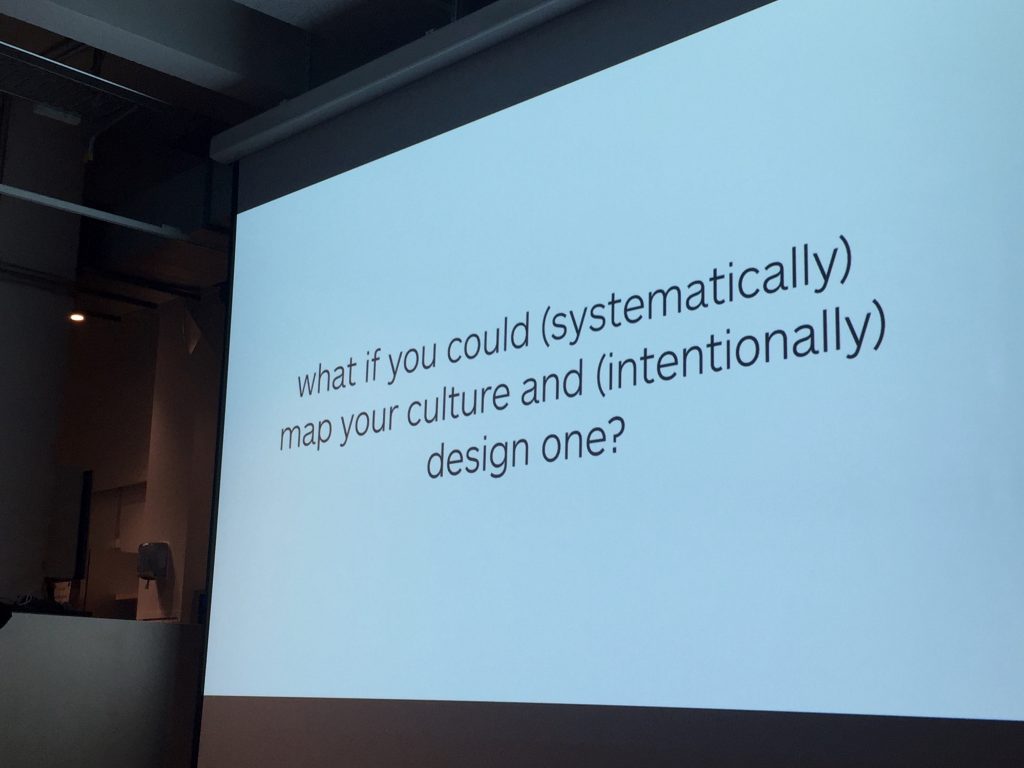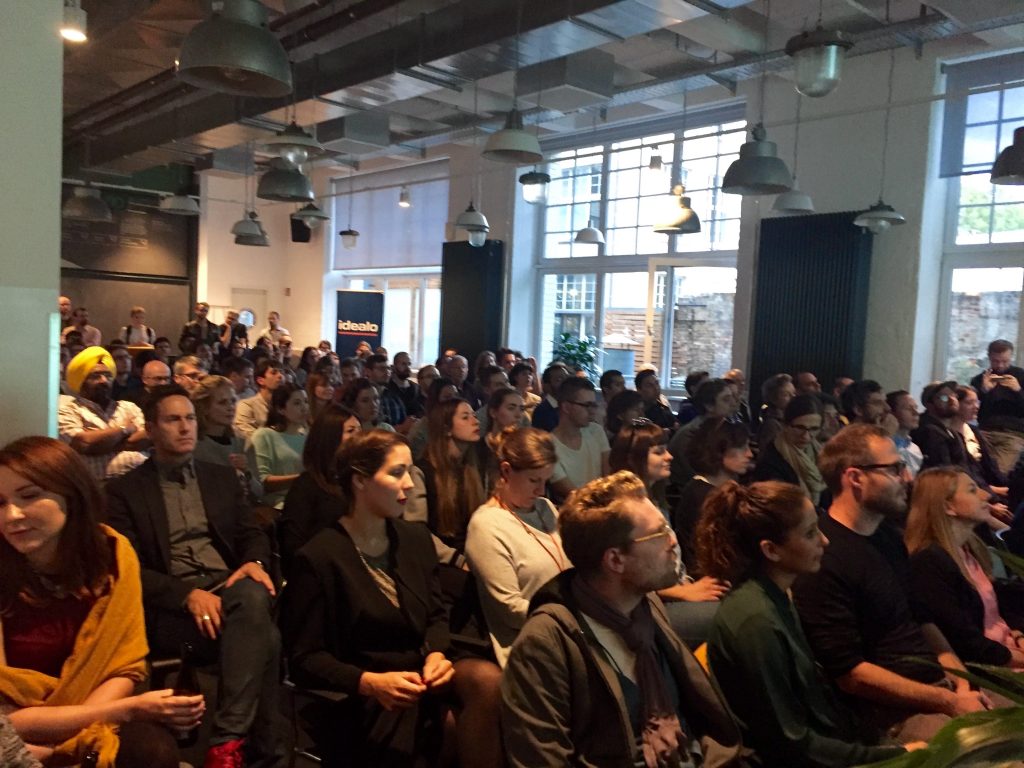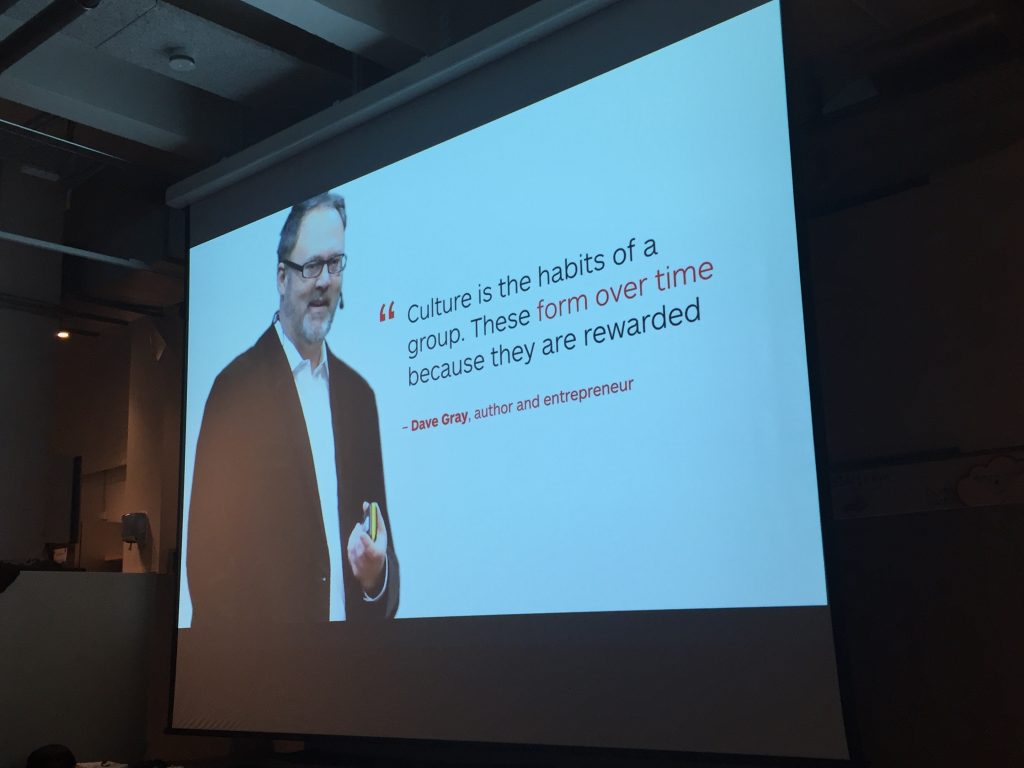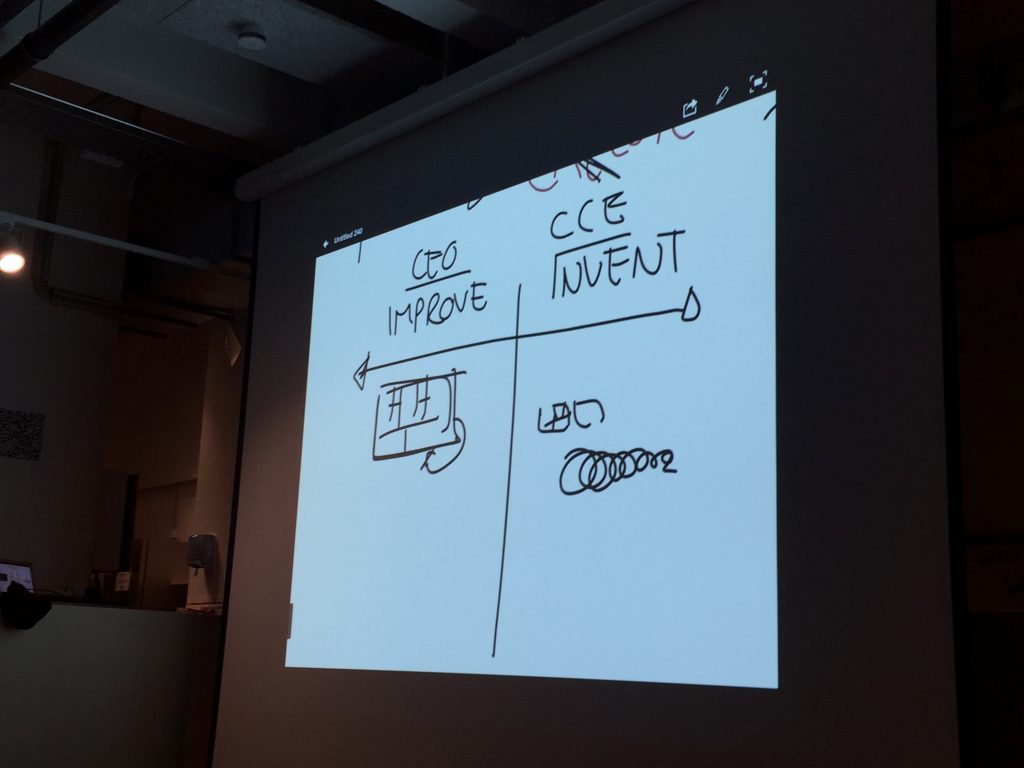WHAT DOES IT TAKE FOR EVEN THE LARGEST CORPORATES IN THE WORLD TO BECOME CAPABLE OF SYSTEMATIC INNOVATION AND ENTREPRENEURSHIP?
Yesterday, I had the unique pleasure of attending a workshop led by Alexander Osterwalder (creator of the Business Model Canvas and lead author of the global bestseller Business Model Generation), organised by my friends at #Podojo – addressing precisely this topic, where we tested one of his latest tools: the Culture Map.
A culture of innovation in larger organisations is growing particularly relevant (and urgent) for market leading companies who feel threatened by the increasing number of industry disruptors emerging in the form of startups.
We wanted to dedicate a special post to the topic, given the huge extent to which Alex Osterwalder’s frameworks and findings on the topic resonated with ours.
So what does it take to wire your company culture for innovation?
Before we get to culture, let’s talk about innovation – and why it is at complete odds with the basic nature of corporates.
Most large, well-managed, market-leading companies are exquisitely-optimised machines of execution. However, as Alex points out, very few companies have the skill (or the space) to actually create new growth engines – that is, completely new business models to create new streams of revenue.
This is what innovation looks like:
It’s not hard to guess why the unpredictable, failure-trodded path to innovation is no friendly route for an established corporate. There are two reasons:
- As Alex argues, when it comes to innovation, companies today still make huge gambles. They bet big on visions and are still far from embracing the victory that failure enables.
- Doing innovation in an established company is not only not properly rewarded – it’s career suicide. This drives innovative, entrepreneurial talent away from large corporates, and into creating their own companies (perhaps competing with the company they left in the first place).
So, what do we need to do to decrease the risk systematically? How can we design a company where entrepreneurship and innovation aren’t career suicide – but a place where they can flourish?
Here are the key takeaways:
– Biggest skill: companies need to learn to get better at failing. Failure is a victory as long as it’s small and fast and cheap.
– Improving (execution) and invention (experimentation) require 2 different cultures.
– Innovation needs to be better understood, and prioritised, inside companies.
A tragic example of failure is Kodak – a company that invented the product that would kill it’s core business (the digital camera), but lacked the ability to embrace and implement their own innovation, a fate which took them from market leading status to bankruptcy.
Contrast that with the case of Amazon, whose core business was selling stuff – a B2C business. Today one of Amazon’s leading streams of revenue comes from B2B business: cloud services! Jeff bezos didn’t invent cloud services – but he created the organisational culture where innovations could be turned into business models, and thrive. Furthermore, this innovation isn’t a one-off case, but rather an outcome of intentional culture.
However, the mere notion of rewiring an established company’s entire culture is – let alone a starting point – not even on the table for most companies.
Enter The Culture Map: a simple tool to manage change by mapping your current culture, and where you want to get, based on three parameters: outcomes, behaviours, and enables/blockers.
And here’s a radical idea that might make it into companies a few years from now: restructuring companies to have two “chiefs” with the same level of power – both reporting to the executive chairman of the board:
1. CEO (Chief EXECUTION Officer) focused on managing the present.
2. CCE (Chief Corporate ENTREPRENEUR) focused on building the future (not to be confused with Head of R&D – focused on tech innovation)
What do you think about that?
Are you a large corporate?
Are you managing change or innovation inside a large company?
We’d love to hear your thoughts and questions.
Contact us at hello@rckt.com








